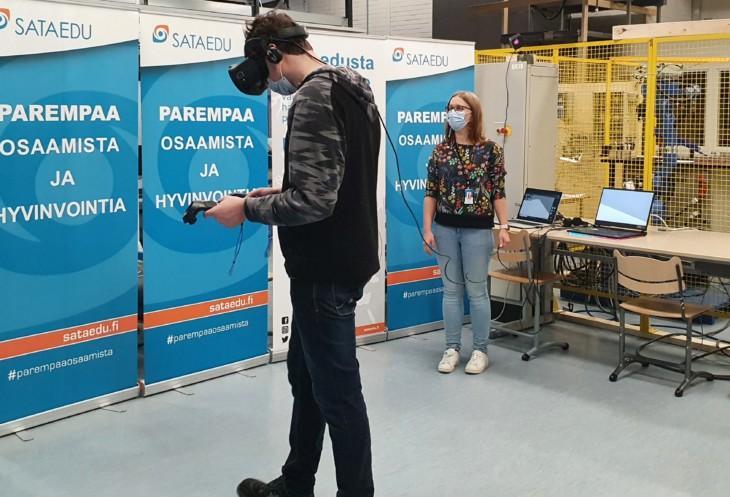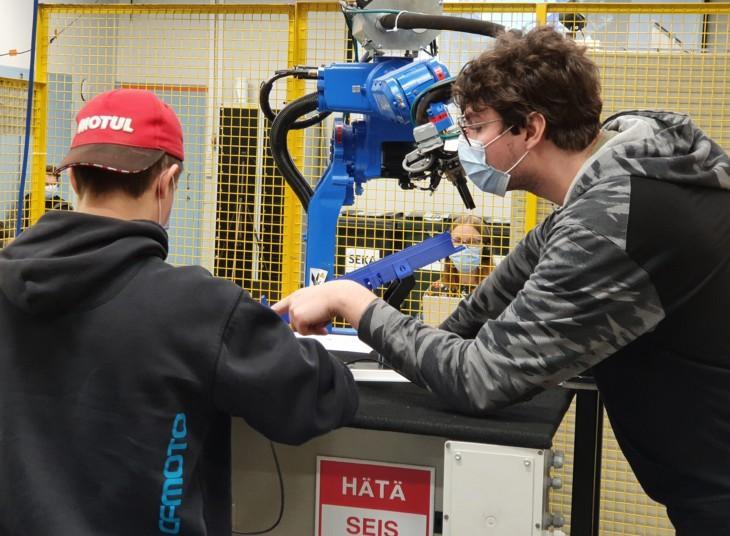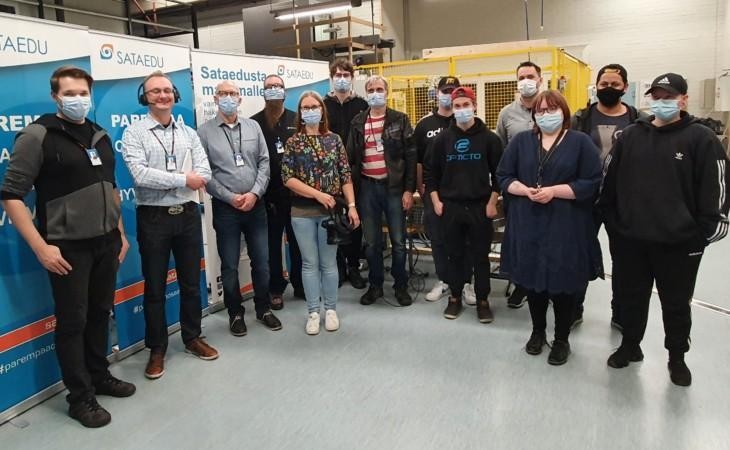On Thursday October 7 several people from Sataedu and our partners in Malignani, Italy and Velenje, Slovenia had their eyes glued to their screens. TalentJourney, a project funded by Erasmus+, enabled this day of piloting the teaching solutions developed in different countries. European education providers have a common need to develop vocational education and training in Robotics. Even though the curricula in the countries are not the same, there is still a lot to be shared.

VR Learning is Fun
When the piloting starts, there are five cameras, computers and VR technology surrounding a robotic arm and a large display screen in a workshop at Sataedu Ulvila unit. The robotic arm inside the robotic cell has been programmed to handle small discrete components. The work progresses well until there are no more components to be handled. To fix the situation, learner Tuomas Ikonen puts on the VR headset and starts the teaching software. With the software he should be able to find the right sensor and install it to the robot. After completing the task successfully, it is time to return to reality. Tuomas searches for the right sensor and installs it like he has been taught after which he restarts the robot. When the components the robot is handling run out again like previously, the robot notices this and stops. Therefore, the task has been mastered and completed perfectly.
To sum up his first user experience, Tuomas Ikonen says that the software is not perfect yet, but it is possible to learn with the VR headset and it is also fun.

A Lot of Work to Get from Plan to Action
The next Industrial Revolution, Industry 4.0, is about to happen. The goal of the TalentJourney project is to discover what are the competence needs this change necessitates until the year 2035. Digitalization and new generations have to be considered when teaching and planning the teaching. The core theme of the project is IIOT, also known as Industrial Internet of Things.
The TalentJourney project began in 2019 and the goal has been to create a new curricula or curriculum modules. The actual target for piloting at Sataedu was not found until late in the Spring. Piloting successfully seemed easy, but it has required a lot of work from the working group in order to make it easy.
– We started with a draft and kept improving that draft while the work progressed. We also considered the pedagogigal requirements. We have brilliant learners in this field. The youngest learners succeeded in their piloting tasks well, says lecturer Jaakko Niemelä.

One Step Closer to eSataedu
Ade Oy has been a partner in the piloting, and the virtual task for the piloting has been developed in collaboration for their Isoveli platform. In addition to tasks such as fixing a robotic cell by installing an additional sensor and by changing the programming, VR tasks relating to car maintenance and electrical installations have piqued interest in different study fields.
Virtual teaching is developing quickly, and some teaching packages already offer a chance to complete unit competence demonstrations virtually.
The piloting of robotics teaching in Ulvila and the experience gained from the piloting have also contributed towards developing Sataedu’s own digital teaching platform eSataedu.